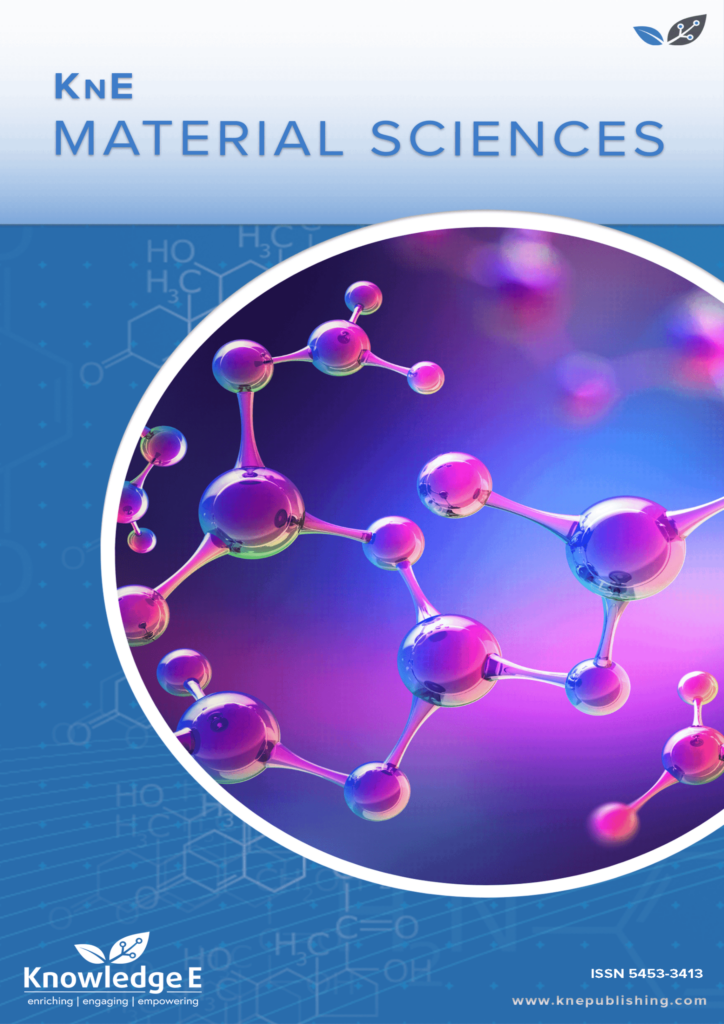
KnE Materials Science
ISSN: 2519-1438
The latest conference proceedings on physical materials, energy materials, electrical materials.
Helium Porosity Formation in Vanadium Alloys of V-Ti-Cr, V-W-Zr and V-W-Ta Systems in Comparison with Binary Alloys
Published date: May 06 2018
Journal Title: KnE Materials Science
Issue title: 15th International School-Conference "New Materials – Materials of Innovative Energy" (MIE)
Pages: 389–398
Authors:
Abstract:
Vanadium alloys are considered candidates for use as structural materials of fusion reactors. A large amount of helium will be accumulated in such materials. The presence of helium in the materials may result in gas swelling. This paper presents the results on helium porosity formation researches in V–Ti–Cr, V–W–Zr and V–W–Ta alloys obtained by means of TEM. Samples were irradiated by 40 keV Не+ ions up to dose of 5 ⋅ 1020
m−2 at 923 K. Alloy V–4%Ti–4%Cr has a smallest helium swelling among the ternary alloys and its swelling is significantly lower than swelling of dual V–Ti and V–Cr alloys. The swelling of the ternary V–2%W–1%Zr alloy is more than 3 times less than the swelling of vanadium, several times less than that of V–W alloys and slightly lower than the swelling of V– Zr alloys. Swelling increases by a factor of 1.5 with increasing of Zr content to 2% in the ternary V–2%W–1%Zr alloy. Similarly, gas swelling of ternary V–2%W–1%Ta alloy is significantly lower than that for binary V–W and V–Ta alloys. Assumptions are made about the possible mechanisms of the effect of alloying elements in vanadium on helium porosity formation.
Keywords: vanadium alloys, swelling, helium, radiation resistance.
References:
[1] D.L. Smith, B.A. Loomis, D.R. Diercks, J. Nucl. Mater. 135 (1985) 125–139.
[2] L.I. Ivanov, Yu.M. Platov, Radiation Physics of Metals and Its Applications, Nauka, Moscow, 2002 (in Russian).
[3] B.A. Kalin, P.A. Platonov, Yu.V. Tuzov et al., Physical Materials Science, vol. 6: Structural Materials for Nuclear Technology, MEPhI, Moscow, 2012 (in Russian).
[4] S.N. Nikulin, S.N. Votinov, A.B. Rozhnov, Vanadium Alloys for Nuclear Application, MISIS, Moscow, 2014 (in Russian).
[5] G. J. Butterworth, C.B.A. Forty, J. Nucl. Mater. 212–215 (1994) 628–634.
[6] A.V. Vatulin, VANT: Mat. Sci. New Mat. 1(62) 2004 26–41 (in Russian).
[7] I.E. Lublinskiy, A.V. Vertkov, V.A. Evtikhin et al., VANT: Fusion 3 (2005) 70–78 (in Russian).
[8] V.F. Zelenskiy, I.M. Nekludov, T.P. Chernyaeva, Radiation Defects and Swelling, Naukova dumka, Kiev, 1988 (in Russian).
[9] I.I. Chernov, S.Yu. Binukova, B.A. Kalin et al., J. Nucl. Mater. 367-370 (2007) 468-472.
[10] I.I. Chernov, B.A. Kalin, М.S. Staltsov et al., J. Nucl. Mater. 459 (2015) 259–264.
[11] S.Yu. Binyukova, I.I. Chernov, B.A. Kalin et al., J. Nucl. Mater. 367–370 (2007) 500- 504.
[12] М.S. Staltsov, I.I. Chernov, B.A. Kalin et al., J. Nucl. Mater. 461 (2015) 56–60.
[13] M.S. Stal’tsov, I.I. Chernov, A.K. Zaw et al., Atomic Energy. 116(1) (2014) 35–41.
[14] G.J. Van der Kolk, A. Van Veen, L.M. Caspers, Delft. Progr. Rept. Ser.: Phys. and Phys. Eng. 4(1) (1979) 19-28.
[15] I.I. Chernov, B.A. Kalin, A.N. Kalashnikov, V.M. Ananin, J. Nucl. Mater. 271&272 (1999) 333-339.
[16] R. Jones, D. Atteridge, J. Nucl. Mater. 66 (1977) 329−332.
[17] R. Pinizzotto, L. Chen, A. Ardell, Met. Trans. 9A(12) (1978) 1715−1727.
[18] S.Yu. Binyukova, I.I. Chernov, B.A. Kalin et al., Atomic Energy 93(1) (2002) 569–577.